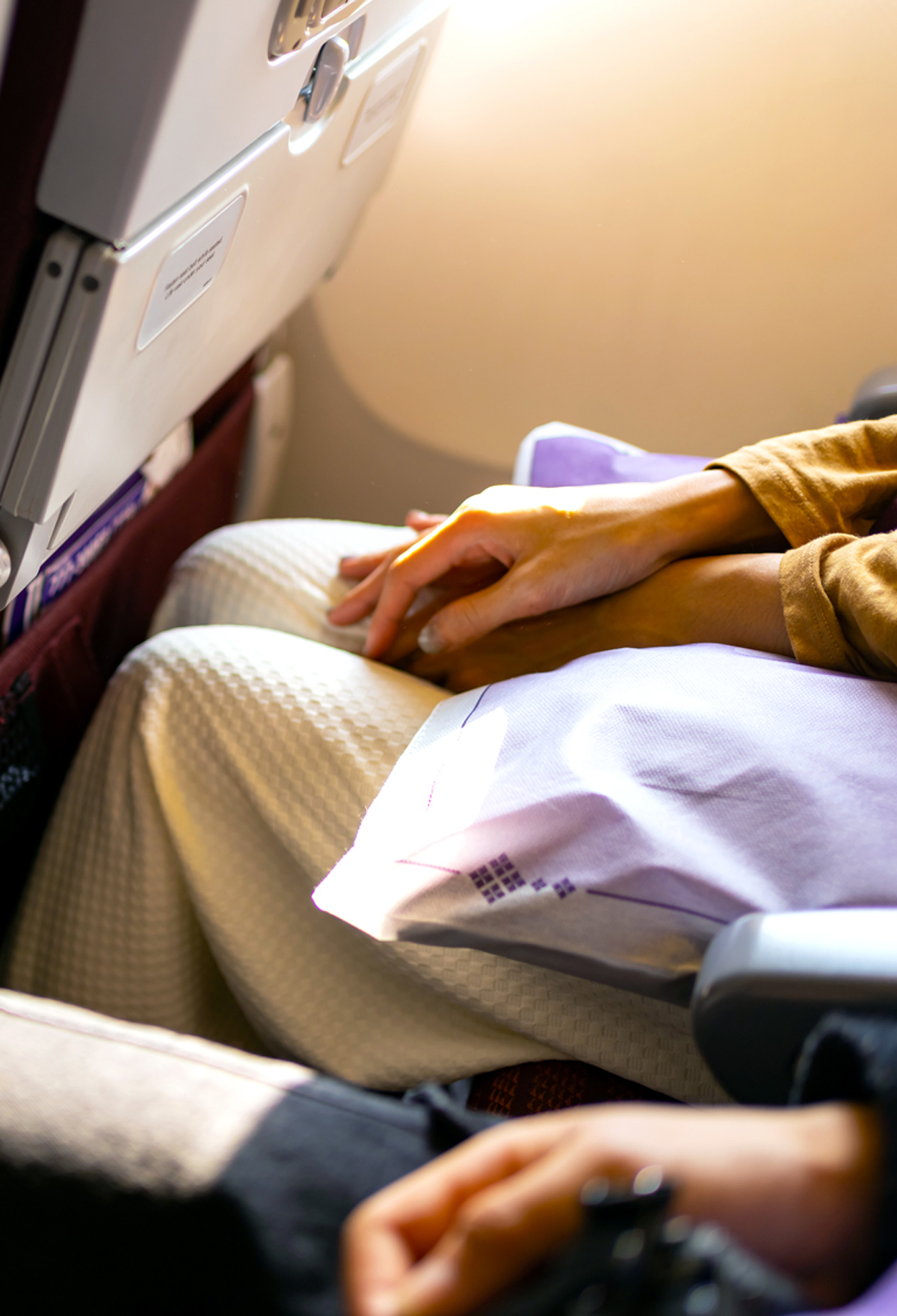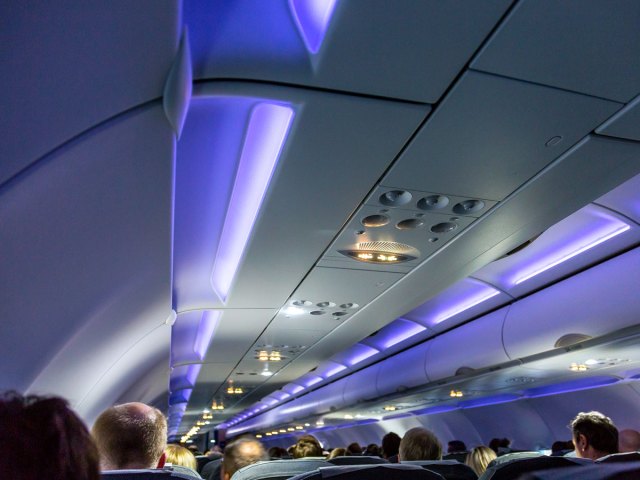It’s an all-too-common complaint among air travelers: cramped airplane cabins. And it’s not just passengers who have noticed — some politicians have even urged the Federal Aviation Administration (FAA) to consider establishing minimum airplane seat sizes. With seats that are too small for the average passenger, there are potential risks when it comes to safely evacuating an airplane during an emergency, but comfort is at stake, too. Here’s why airplane seats have been getting smaller — and how to avoid getting stuck in one on your next flight.
Seat Pitch Has Shrunk in the Past 30 Years
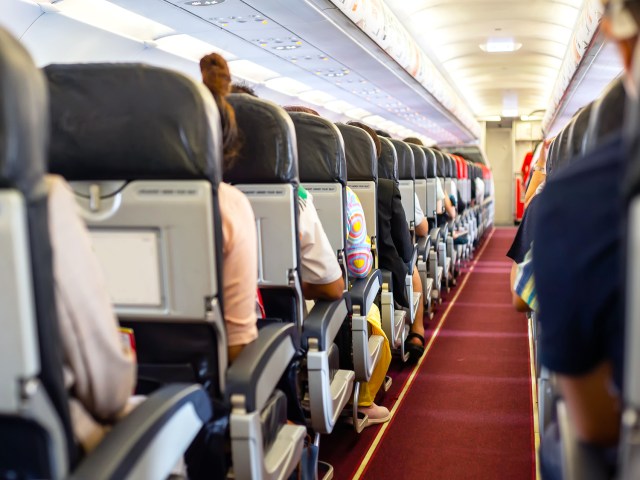
“Seat pitch” is the term airlines use to describe the distance from the point on one seat to the same point on the seat in the next row. In simpler terms: legroom. According to an analysis conducted by USA Today, the average seat pitch among major U.S. airlines in economy class has dropped from a minimum of 31 to 32 inches in the 1990s to as little as 30 inches today. A difference of 1 to 2 inches may not sound like a lot, but it’s a noticeable difference once you’re in the seat, especially if you’re above average height.
It’s worth noting, too, that in many cases the seatbacks themselves are thinner. These newer-generation “slimline” seats help airlines squeeze in more revenue-generating seats per aircraft. Airlines have redesigned them for more personal space by, for example, placing magazine pockets higher or reducing the size of tray tables. But this also “allows airlines to claim that passengers have as much above-the-knee ‘personal space’ as they did before, even if the seats are slightly closer together below the knee,” USA Today notes. And since the seats are slimmer, the padding is reduced, which can also have a noticeable impact on passenger comfort.
In addition to seat pitch, seat width has also taken a hit. The average width on many U.S. airlines has shrunk from 18.5 inches to 17 inches since the 1960s, despite the fact that the average American man is 30 pounds heavier today, according to the Washington Post. This has raised safety concerns and the question of whether the government needs to mandate a minimum seat size.
Recently, several bills have been introduced in Congress, and the FAA has also solicited public opinion on the matter, but so far nothing has been set in stone. In 2022, the Justice Department said the FAA’s “examination of existing evidence has not yet demonstrated a safety need for minimum seat dimensions,” but the FAA continues to “diligently examine” the issue, per Reuters.
Rising Costs and More Competition
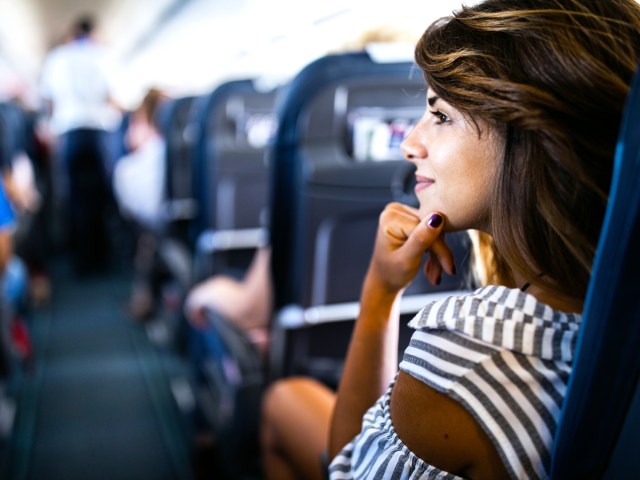
To understand why legroom is shrinking, start by looking at the higher costs and increased competition airlines are facing compared to 30 years ago. Notably, the rise of ultra-low-cost carriers (ULCCs) over the past several decades has put downward pressure on airfares. These carriers charge fares as low as $19 one way, but their business model is based on upselling passengers on everything from seat assignments to carry-on baggage and even printing their boarding pass at the airport.
Budget airlines can also offer such low fares because they fit more seats into each aircraft — while legacy airlines like Delta offer a minimum of 30 inches of pitch, you’ll find even less room (28 to 29 inches) on carriers like Spirit and Frontier. As these carriers grow, the average seat pitch across the industry has been reduced.
Recently, airlines have also contended with surging fuel prices, labor shortages, and higher labor costs. While they’ve passed those costs onto customers — ticket prices jumped a whopping 25% from 2023 to 2024 — airlines are also looking to generate more revenue wherever they can find it. By reducing legroom, they can squeeze in more seats — and also charge a premium for extra legroom in economy class or encourage more passengers to pony up for first class.
But how much tighter can airline cabins get? In 2017, American Airlines announced plans to retrofit and add more seats to its Boeing 737-800. While the majority of economy-class seats were reduced from 31 to 30 inches of pitch, three rows at the back of the aircraft got only 29 inches of legroom — similar to the pitch on airlines like Spirit. The airline faced enough backlash that it announced it would reverse its decision, so it seems unlikely that legroom will get any tighter on major carriers, at least for now.
How To Get More Legroom on Your Next Flight
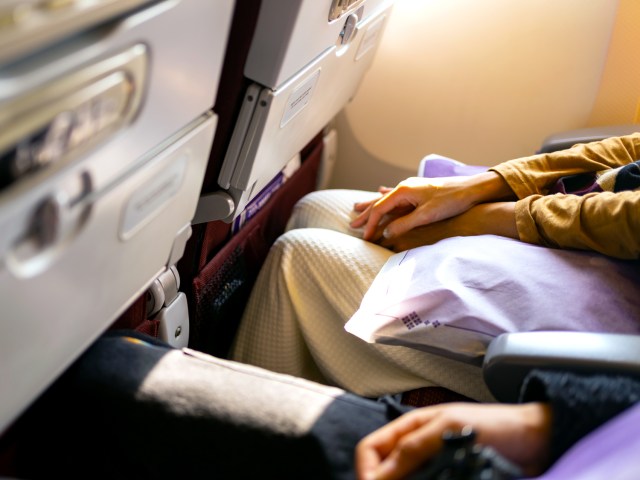
If you’re looking for a little extra space to stretch out, it’s not all bad news. First, some U.S. airlines still offer above-average legroom. On JetBlue, the space between seats is a minimum of 32 inches — the most of any U.S. carrier. Some international carriers offer even more space; for example, Japan Airlines has 34 inches of legroom in its regular economy seats, which should help you get a little more comfortable on a long-haul flight.
If you’re flying an airline with tighter seat pitch, there’s also a good chance you can pay more for better legroom. These extra-legroom economy seats go by different names: Economy Plus on United Airlines, Comfort+ on Delta, or Main Cabin Extra on American, for example. And in late 2024, Southwest Airlines announced plans to offer extra-legroom seating on its aircraft; soon, passengers will be able to pay an additional fee to secure up to 5 more inches of space. Plus, if you have elite status on an airline, you can often select these seats free of charge.
There are a few other tips and tricks to score a seat with more room. When you book, you can look up a detailed seat map for the aircraft you’re flying on to spot any irregularities — for example, look for seats at exit rows that don’t have another seat in front of them. Better seats sometimes open up closer to check-in and boarding, too, so it’s worth keeping a close eye on the seat map up to departure. And a little strategy goes a long way: According to some travel experts, seats toward the back of the cabin tend to get picked last, so there’s a greater chance of having an unoccupied seat next to you — which many would consider a priceless perk in an era of ever-shrinking economy seats.
More from our network
Daily Passport is part of Inbox Studio, which publishes content that uplifts, informs, and inspires.






